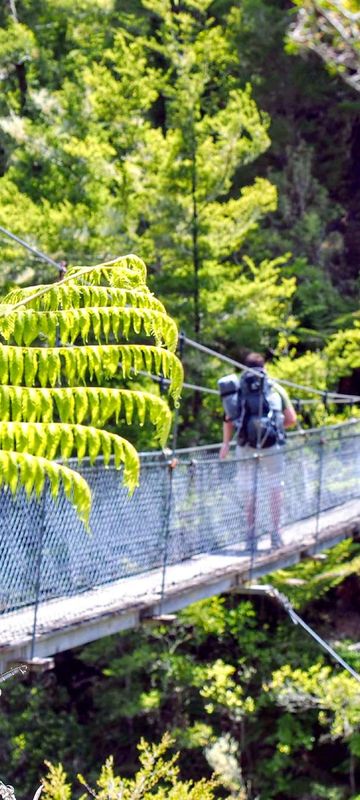Don’t panic! A holiday to New Zealand doesn’t have to mean choosing between ‘one or the other’ island as it’s easy to combine the two. A typical 3-week itinerary, for example, can cover a host of highlights of North and South Island in a single, amazing self-drive or escorted tour. The beauty of this captivating country is that wherever you go, you’ll find spectacular scenery, a friendly Kiwi welcome and huge array of adventures possibilities.
But it’s still useful to know the main differences between the New Zealand’s two main islands – it will help you plan your trip more effectively so you get the very best from your holiday. Here’s what you need to know…
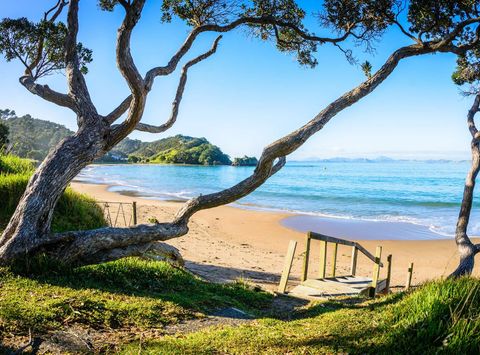
North Island gives you a taste of the subtropics
Northland – the ‘winterless’ peninsula at the top of North Island – has subtropical weather during summer (Dec–Feb), and its white sandy beaches, island-dotted bays and luxuriant forests certainly have an exotic vibe compared to the cooler far reaches of South Island. If you’re looking for the sunniest spots in New Zealand, the Bay of Plenty, Hawkes Bay and Marlborough region steal the limelight. Ultimately, though, New Zealand’s climate is strongly influenced by the ocean, leading to a generally mild climate with plenty of sunshine wherever you go.
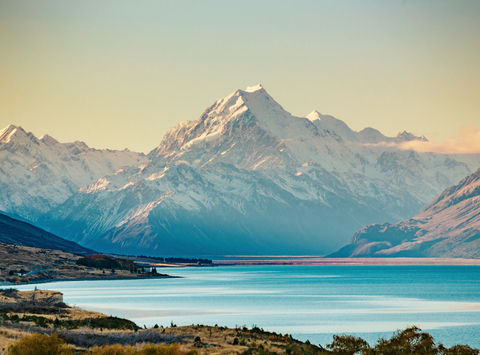
South Island is big on mountains
South Island is dominated by a central spine of snow-capped mountains – the Southern Alps – running almost the entire length of the island. You can see why the Māori named Aotearoa ‘The Land of the Long White Cloud’ when they gazed on this 500km-long rampart of peaks, dominated by 3,724m Aoraki (Mt Cook). It’s a breathtaking sight – and full of adventure potential too, with everything from hikes and glacier walks to stargazing and lake cruises on offer.
North Island has a chain of smaller mountain ranges along its eastern flank, but is better known for its central volcanic plateau where Ngauruhoe, Ruapehu, Tongariro and other volcanoes loom above spectacular geothermal landscapes. The Tongariro Crossing promises an unforgettable day hike, while several hotspots of boiling springs and erupting geysers are steeped in Māori tradition and offer fascinating insights into both the geology and indigenous culture of New Zealand.
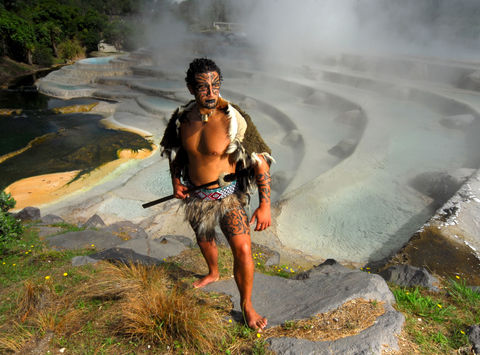
North Island has rich Māori culture
You’ll encounter Māori traditions and legends throughout New Zealand, but North Island has the densest concentration of Māori people and widest array of cultural experiences. New Zealand’s founding document, the Treaty of Waitingi was signed in 1840 by the British Crown and Māori chiefs – the historic site, overlooking the Bay of Islands, offers a captivating insight into Māori culture. The spirit of New Zealand’s indigenous people is also embodied in the geothermal sites of Rotorua where several Māori villages and cultural centres showcase traditions such as the pōhiri (welcoming ceremony), hāngī (steam-cooked meal) and traditional wood carving. In Northland, Māori guides will lead you on walks beneath spiritual kauri trees in Waipoua Forest, revealing local myths and legends, while the Te Papa Museum in Wellington is a treasure trove of Māori artefacts.
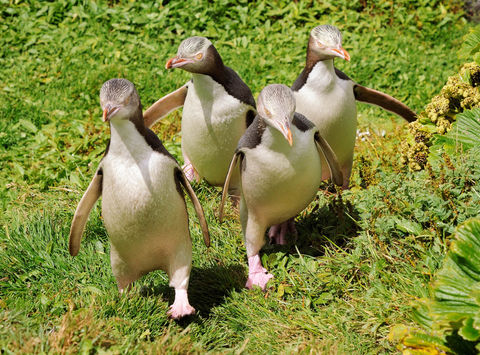
South Island offers the best wildlife encounters
That’s perhaps a little unfair to North Island where you can drift beneath twinkling glow worms on a boat trip through the Waitomo Caves, gawp at thousands of rowdy gannets at Cape Kidnappers, ogle cute kiwi chicks at the hatchery in Rotorua and spot native species like the takahe and tuatara at Wellington’s Zealandia eco-sanctuary.
South Island, on the other hand, has yellow-eyed penguins and nesting royal albatrosses on the Otago Peninsula near Dunedin. Further up the coast, the Akaroa Peninsula near Christchurch is a prime spot for watching little penguins and Hector’s dolphins, while boat trips from Kaikoura offer spellbinding views of wandering albatrosses, sperm whales and dusky dolphins (you can even swim with the latter).
Off the southern tip of South Island, head to Stewart Island for more albatrosses or to watch kiwis at night as they scour the strandline of wild beaches. Tiny Ulva Island, off the east coast of Stewart Island is a refuge for several rare, indigenous birds. Doubtful Sound is home to Fiordland crested penguins, while an encounter with the inquisitive kea parrot is always a highlight of a trek in the Southern Alps.
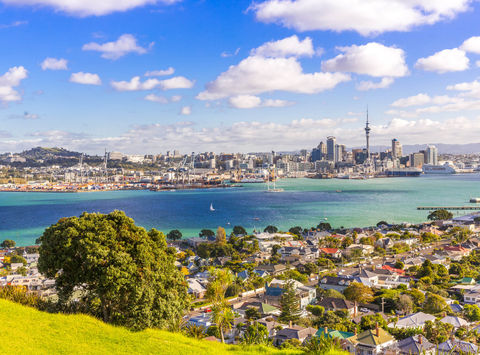
North Island has New Zealand’s biggest city
With a population of around 1.6 million, Auckland has four times more inhabitants than Christchurch, the largest city on South Island. In fact, four of New Zealand’s five largest cities (Auckland, Wellington, Hamilton and Napier-Hastings) are located on North Island. Presiding over a beautiful harbour, Auckland is one of those enviable ocean-side cities that mix the urban pleasures of great restaurants, museums and parks with pristine beaches and easily-reached wilderness.
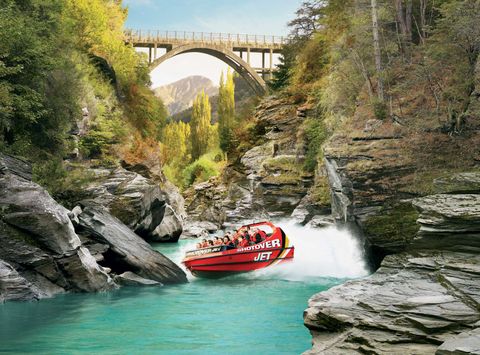
South Island has the ‘world’s adventure capital’
When a New Zealand farmer called Bill Hamilton was having trouble reaching parts of his land that were isolated by shallow rivers he invented a jet-powered boat that could travel with incredible manoeuvrability in just a few centimetres of water. In 1970, Hamilton’s idea was given the tourist spin when Shotover Jetboat rides were launched in Queenstown. Following in their wake came white-water rafting. Then someone had the idea of jumping off a bridge on a long elastic rope. Once bungy jumping took off, there was no looking back. Queenstown became awash with adrenaline.
Nowadays, the former gold rush town offers dozens of activities, including canyoning, heli-hiking, skiing and mountain biking – as well as more sedate options such as lake cruises and 4WD tours. That’s not to say that North Island is pedestrian. Far from it. You can bungy off Auckland Harbour Bridge, raft the Kaituna River, kayak in the Bay of Islands…
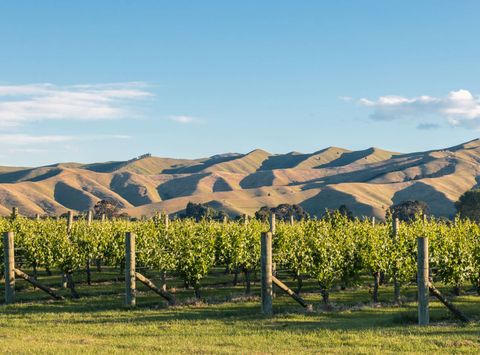
South Island put New Zealand wine on the map
Or, to be more specific, Marlborough’s exquisite Sauvignon Blanc took the international wine scene by storm in the 1980s. The northeast corner of South Island, renowned for its sunny climate and free-draining soils, now produces around two-thirds of New Zealand’s wines, including plumy Pinot Noir and citrusy Chardonnay. A wine tour is a must – either here, or in one of New Zealand’s other famous wine regions, such as Hawke’s Bay, Central Otago, Gisborne and Wairarapa. Three of which happen to be on North Island.
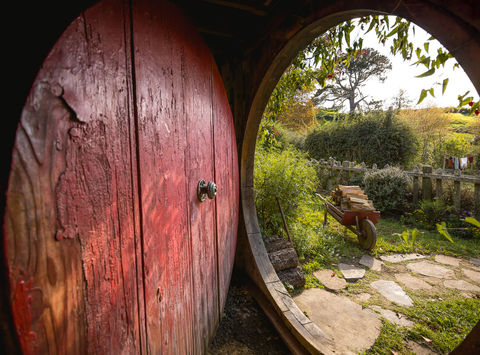
North Island is the home of Bilbo and Frodo Baggins
Tucked into green hillsides next to a tranquil lake, two hours south of Auckland, you’ll find a little piece of Middle Earth. The movie set for Hobbiton recreates the peaceful pastures of The Shire, from where Bilbo and Frodo Baggins set off on their daring adventures. You can explore the Hobbit Hole homes with their round doors and carefully tended gardens on themed tours. But that’s just the start of your homage to Peter Jackson’s filming locations for the epic trilogy.
You’ll also want to see Mount Doom (Mt Ngauruhoe in North Island’s Tongariro National Park), the Gardens of Isengard (Harcourt Park, Wellington) and on South Island: Edoras (Mount Sunday, Canterbury), Pelennor Fields (near Twizel, Mackenzie Country), Lothlorien (near Glenorchy) and Fanghorn Forest (near Te Anau).
Combine both North Island and South Island
The reality is that when you fly to the other side of the world, you’ll be inclined to visit both islands, starting in one and ending in the other. Fly into Auckland on North Island and fly out of Christchurch on South Island, or vice versa.
An open-jaw flight ticket means you can travel overland between these gateway cities, plotting an itinerary that covers more ground – and potentially more highlights. Our highly knowledgeable and passionate team will be delighted to craft the ultimate New Zealand adventure for you, covering all the highlights in both North and South Island and with plenty of time to relax too. It’s also fully flexible – just ask us to tailor make your perfect trip.
If you’d like to start planning your own holiday to New Zealand, call us on 01737 214 250, or you can send an enquiry to our Kiwi travel specialists to start discussing your options.
























